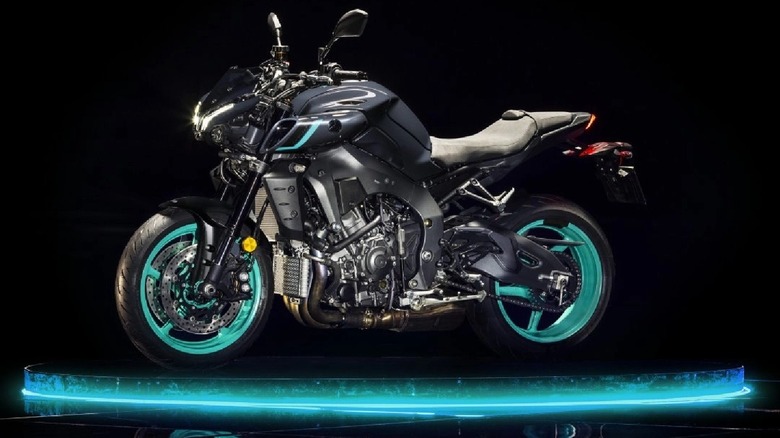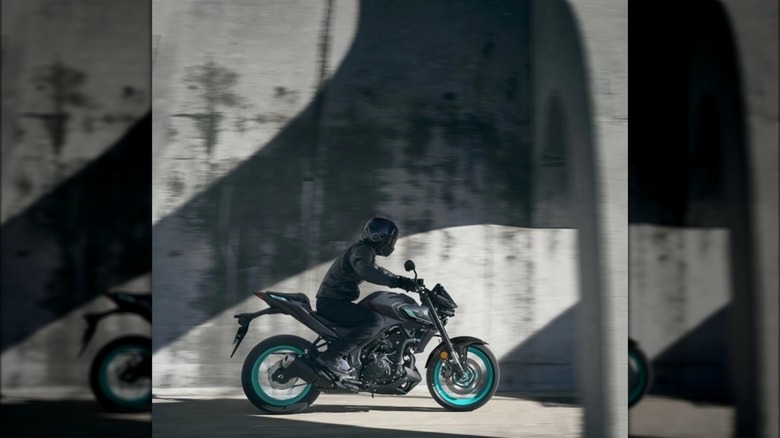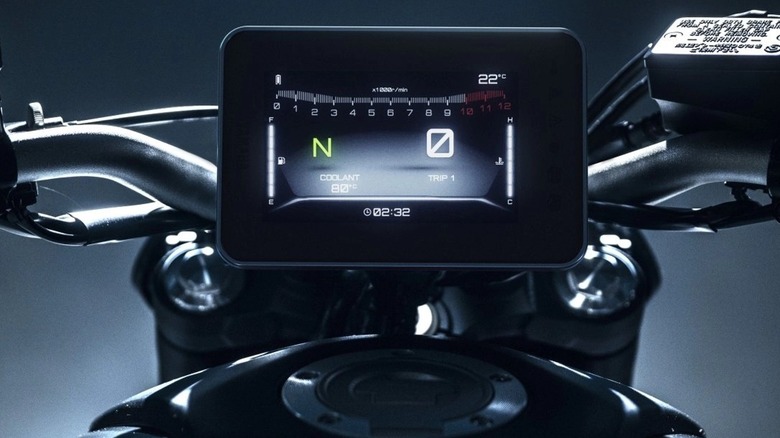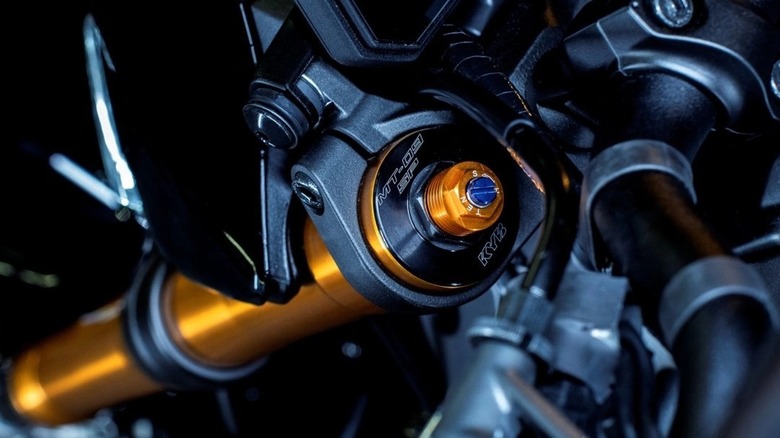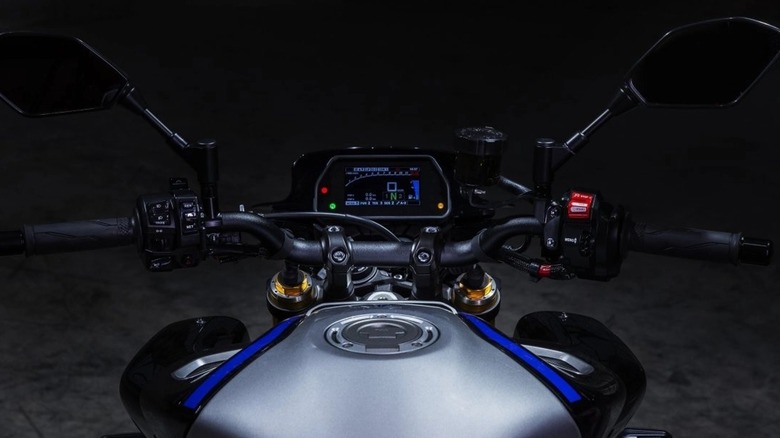Every Yamaha Naked Bike You Can Buy Today Ranked From Cheapest To Most Expensive
Choosing between naked and sport bikes used to be a simple matter of which style you preferred. Back in the late 1990s, motorcycle manufacturers did little more than omit the body panels on their sport bikes to create naked versions.
Yamaha followed other brands into the naked bike movement, even making a 50cc motorcycle, the RZ50, in 1998. The FZ1 Fazer, borrowing an engine design from the R1, is credited as Yamaha's first big naked bike. The FZ1 laid the foundation on which Yamaha built its current naked bike dynasty, the MT-Series.
Yamaha had been working on the MT-Series for several years before launching the MT-Series lineup. It started with the MT-01 concept, which debuted at the 1999 Tokyo Motor Show. The MT engineering team hoped to create a motorcycle that provided "Mega Torque" (MT) and superb handling for urban use.
In the United States, naked bike enthusiasts may be more familiar with the FZ moniker. However, to paraphrase a famous line, an MT by any other name is still as sweet, and Yamaha's FZ and MT motorcycles are the same, just with different names for the U.S. market. Ranked from cheapest to most expensive MSRP, Yamaha's current naked bike lineup includes models such as the MT-03, MT-07, MT-09, MT-09 SP, MT-10, and MT-10 SP.
The smallest of the MT-Series naked bikes, the 2024 Yamaha MT-03
The 2024 Yamaha MT-03 isn't only the smallest of the MT-Series naked bikes, it's also the cheapest with its MSRP starting at $4,999. Featuring a 321cc liquid-cooled inline-twin four-stroke engine with a 180-degree crankshaft, the MT-03 is available in Matte Stealth Black or Midnight Cyan for a splash of color.
The lightweight clutch feel and six-speed transmission make the MT-03 a breeze to ride in stop-and-go urban traffic while its smooth throttle response makes it easy to manage low rpm torque. Up front, the inverted 37mm KYB fork and cast aluminum upper triple clamp ensure consistent response when braking, accelerating, and cornering. The 22.3-inch-long rear swing arm and seven-step preload adjustable shock work with the front suspension to provide a mix of rider comfort and performance most often found in larger, more expensive bikes.
Premium features found on the MT-03 include LED lights, ABS, and a digital LCD instrument screen. The MT-03's 30.7-inch seat height makes it easier for shorter and less experienced riders to confidently plant both feet on the ground for better control.
The 2024 Yamaha MT-07, the other MT-Series twin
A step up in size and price from the MT-03 is the $8,199 2024 Yamaha MT-07. Compared to the MT-03, the MT-07 provides a larger inline-twin engine, an additional color scheme option, and more tech features.
The 2024 Yamaha MT-07 features Yamaha's liquid-cooled DOHC 689cc CP2 engine. Designed to provide low- and mid-range torque in addition to power in the upper range of its rev limit, the MT-07's engine uses fuel injection to deliver predictable throttle response throughout its range.
MT-07 color options include Matte Raven Black, Midnight Cyan, and Team Yamaha Blue. Enhanced tech features include the full-color five-inch display screen with two distinct display modes: Street and Touring and LED Projector lighting.
The MT-07 also uses a larger, 41mm KYB front fork and a link-type KYB rear shock, each with 5.1 inches of travel. The rear shock is adjustable for spring preload and rebound damping, while the front fork features "carefully selected spring rates and damping settings."
Anti-lock brakes and a six-speed transmission are standard on the MT-07. In addition, the seat height increases to 31.7 inches on the bigger bike.
The 2024 Yamaha MT-09 comes in two versions
The base 2024 Yamaha MT-09 carries an MSRP of $10,599 and offers the same color schemes as the MT-07. The other version, the $12,299 MSRP 2024 MT-09 SP, only provides one color combination — Liquid Metal and Raven. However, the front forks are also a different color thanks to the SP's DLC-coated 41mm KYB fork tubes.
Both MT-09 versions feature Yamaha's 890cc CP3 cross-plane crankshaft triple, computer-controlled throttle system, and six-axis Inertial Measurement Unit (IMU). These advanced tech features aid the MT-09s' four-mode Traction Control, Slide Control, front-wheel Lift Control, and two-mode Brake Control Systems. These systems can be selected independently and offer adjustable levels of control through Yamaha Ride Control (YRC) settings.
The MT-09 YRC settings include three pre-programmed modes, SPORT, STREET, AND RAIN, two rider customizable settings, and four SP-specific TRACK modes. These options are accessed through the onboard full-color five-inch display screen or the Y-Connect app on a smartphone.
The list of special features continues with the MT-09's Assist and Slipper clutch, Third-Generation Quickshifter System, and cruise control. The bike's engine and exhaust sounds are enhanced by the top-mounted acoustic amplifier grilles that direct its high-frequency induction sounds toward the rider and dual-outlet mufflers for more low-frequency sounds at low speeds.
Another unique MT-09 SP feature is the Engine Brake Management (EBM) system with two selectable levels of engine braking for track use. Finally, both versions have a seat height of 32.5 inches and six-speed transmissions.
The flagship 2024 Yamaha MT-10 also comes in an SP version
The 2024 Yamaha MT-10 MSRP starts at $14,499 while the 2024 MT-10 SP has a $16,999 MSRP. The basic MT-10 only comes in the Midnight Cyan color scheme whereas the MT-10 SP is only available in the Liquid Metal and Raven combination.
Both MT-10 versions feature a 998cc CP4 inline cross-plane crank four-cylinder engine Yamaha designates as "High-Torque," likely as a nod to the MT's Mega-Torque-mission beginnings. In addition, the MT-10 and MT-10 SP systems include the same IMU rider aids found on the MT-09 SP. Oddly, the full-color TFT display found on either MT-10 version only measures 4.2 inches compared to the five-inch screens found on other MT-Series bikes.
Features exclusive to the MT-10 SP include color-matched lower fairing and braided steel brake lines. However, the most compelling upgrade to the MT-10 SP is the Öhlins' Semi-Active Suspension System. Electronic adjustments allow six damping modes — three manual and three automatic. Automatic modes continuously adjust suspension damping to suit the current riding conditions. Manual modes let riders dial in preferred compression and rebound damping electronically.
